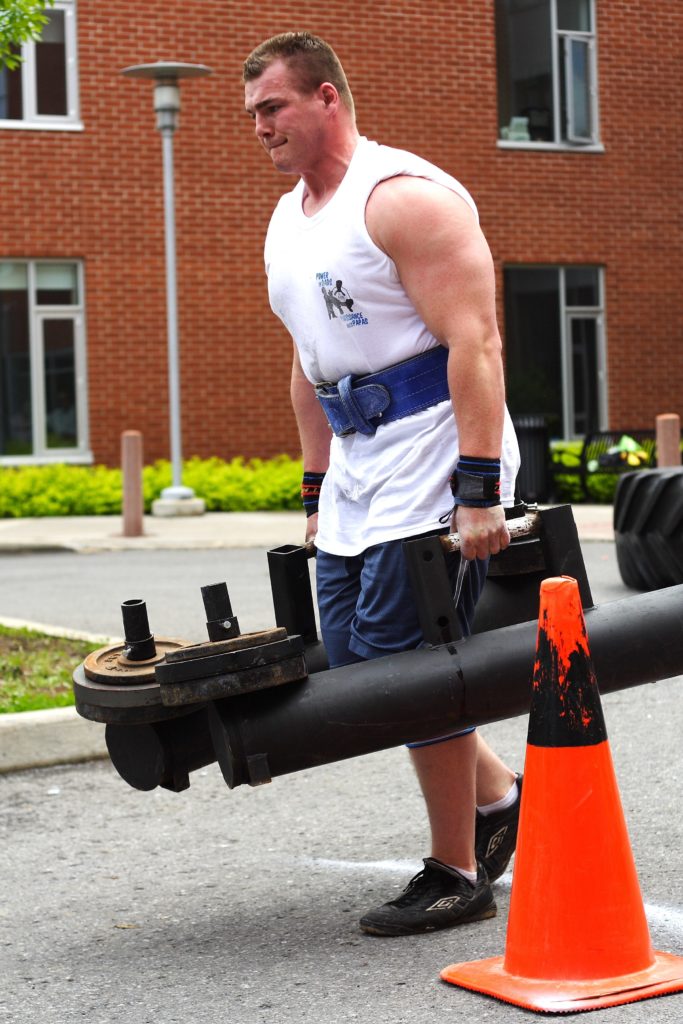A couple of months ago, Doug Chapman texted me and said, “You free for lunch?”
He was driving through the Sault on a circle tour of Lake Superior with his son. This is the kind of invitation you don’t turn down. So we met at a local restaurant and talked about the Games, programming, and the fitness industry in general.
If you don’t know him, Chapman is the coach to over a dozen CrossFit Games champions across all divisions and age categories. He owned the 13th CrossFit affiliate, but was coaching long before he opened HyperFit in 2005. I started coaching in 1996 and opened Catalyst in 2005 – in this industry, that makes us old-timers.
One of the key differences in Chapman’s programming is “general conditioning” – he includes a lot of not-for-time, drop-your-guts “slow” work. These include pulling sleds for miles, walking with a heavy yoke, and farmers’ walks.
Chapman believes in the value of the slower-paced grind. First, it’s incredible for your mental attitude: you can always take one more step. But the lower threshold also allows for a lot more work to be done over time, because your body can break down waste product at a level closer to demand. The reason you stop doing thrusters in “Fran” is simply because you’re not efficient enough to remove lactate from your muscles fast enough. You’re creating waste much faster than you can buffer it. But at a slower pace, those rates are closer to equal. You need both the high-threshold, all-out work AND the slower-paced mulish struggle. It’s the middle ground between “Fran” and running a 5k.
Longer sled pulls and heavy carries elevate conditioning in a general sense. But here’s why I love Farmers’ Walks specifically:
1. Grip training is the real reason you can’t get more pull-ups. Brachioradialis (your forearm “grip” muscle) stabilizes your elbow while your biceps contract to pull you up. When brachioradialis gets tired, the biceps have to stabilize the elbow AND contract–it’s like riding the brake and hitting the gas at once.
2. To quote Fran Rose, “Grip is a choice.” That’s certainly true. It’s also a specific weak point for many. How many Open events do you have to finish by saying, “It’s my grip!” before you decide to do more grip-specific work?
3. Near-maximal abdominal bracing under load. Think of a Farmers’ Walk as vertical planking. You’re contracting transverse abdominus, bracing your low back, and maintaining intra-abdominal pressure. But because your spine is stacked the way it’s meant to be, you can add weight.
4. Traps and lats. If you squeeze your lats hard during a Farmers’ Walk, you’ll add support to the spine not unlike the shocks on your car. And if you cue your lats, you’ll move your thoracic spine into a stable position. Guess what? You should be doing these two things every time you lift from the ground. Farmers’ Walk wires in those critical static responses.
5. Triceps. They’re not active during a Farmers’ Carry, but they sure look cool.
6. Pelvic mobility while bracing. Most of our lifts are done with our feet planted. That means the pelvis rotates only on one plane. But in real life, we twist as we move. Athletic injuries don’t usually happen while jumping straight up and down, but while moving sideways or forward. This is because we’re weaker with our feet apart. So let’s fix that. What else locks our pelvis into one position? Sitting all day. Farmers’ walks strengthen the muscles (like glutes and quadratus lumborum) that go slack from your chair.
Conditioning. Fat loss. More pull-ups. Stronger back. Flexing your muscles while walking down the street, looking tough. What’s not to love?
Skip to content
Fill out the form below to get started
Take the first step towards getting the results that you want!

